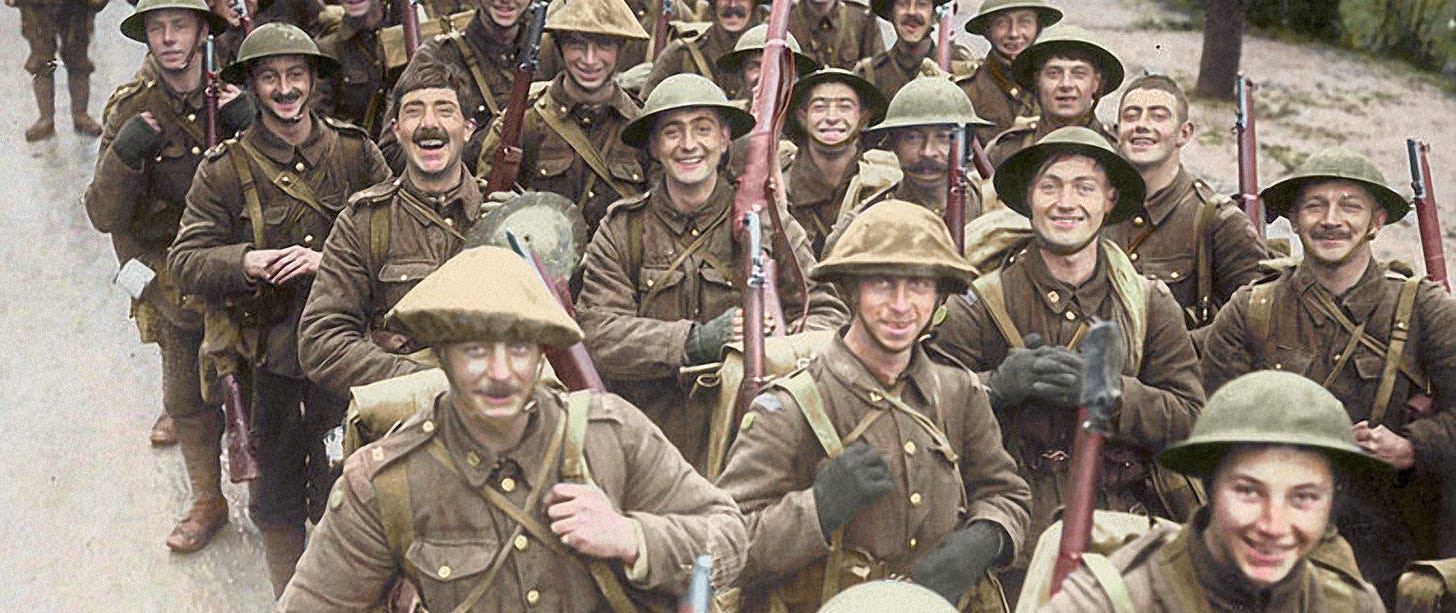
Is it possible that war is a biological imperative? That people inevitably get involved in war before they understand the consequences? That the governments of nations actually want the horrors of war brought upon their own people? Or does it all boil down to a small minority of wealthy men simply wanting more money for themselves?
Are we human beings forever committed to war in the absence of answers to those questions? How do we keep getting ourselves into these nightmares?
Maybe you sing your way into them!
One of the most popular songs among British, German and Russian armies during World War 1 was a jaunty little ditty about a young Irish soldier named Paddy, stationed in England and pining for his sweetheart, Molly, back home in Tipperary. The song, long familiar to most of the so-called civilized world, is “It’s a Long, Long Way to Tipperary”, referencing a small town in the Irish hinterland with little to commend it aside from the song which made it famous.
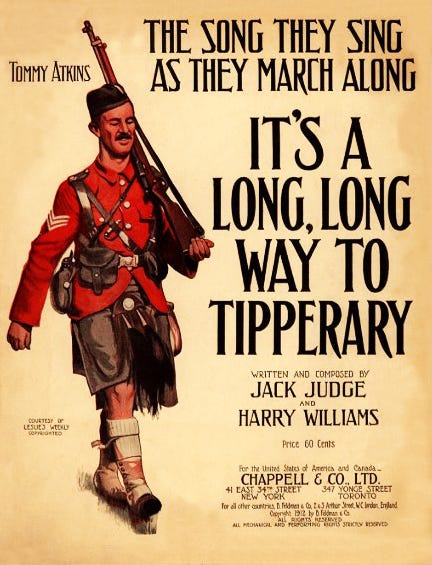
Music hall entertainer, Jack Judge wrote the song on a five shilling bet in a pub that he couldn’t write and perform a new song overnight. He made up the tune in his head on January 30, 1912, and without being able to write music, hummed it to friend and co-composer Harry Williams. He won the bet the next day.
1912 was the year Roald Amundsen and his team of dogs and explorers became the first humans and canines to reach the South Pole, Henry Flagler’s railroad finally got to its southern terminus at Key West, after stretching 169 miles over trestle across the ocean, Alfred Wegener presented his theory of continental drift, the Boston Red Sox beat the New York Giants four games to three in the World Series and New Mexico became a state.
Then, in 1914, with much flag-waving fanfare and excited hurrahs, the world went dark in one of the most miserable and bloodiest conflicts in history.
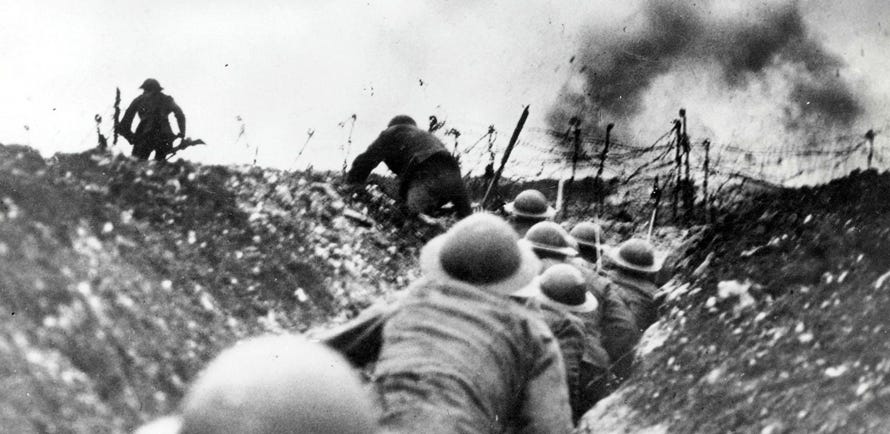
George Curnock, correspondent for the UK’s Daily Mail, first heard the tune in Boulogne, France, in August, 1914. He wrote: “… a company of the 2nd Battalion Connaught Rangers passed us singing, with a note of strange pathos in their rich Irish voices, a song I had never heard before…”.
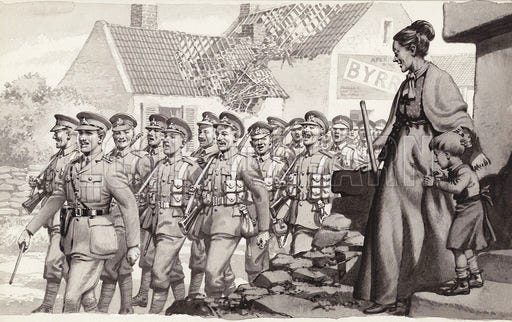
This song, with its strong cadences and hearty harmonies, seems almost tailor made for the purpose of troops on the march. Although Jack Judge wrote it for music hall performances in 1912, it became a favorite in 1914, of soldiers marching off to kill each other in the blood-soaked mud of the First World War.
“It’s a long way to Tipperary,
It’s a long way to go.
It’s a long way to Tipperary,
To the sweetest girl I know!
Goodbye Picadilly! Farewell Leicester Square!
It’s a long, long way to Tipperary,
But my heart’s right there!”
It also found its way into World War 2
One of the best and most successful movies of recent years was Das Boot, the gripping story of young German submariners enduring the hazards of war in a U-boat in the Atlantic in 1942. The 1981 movie doesn’t favor the German side and, in fact, mocks the goosestepping Nazis and remains irreverent regarding the nation’s war effort but does present the fear, claustrophobia and horror of men engaged in submarine warfare.
In a remarkable scene, the crew of the U-96, is shown celebrating their escape from near death in the Mediterranean Sea by drinking beer inside the submarine and loudly signing “It’s a Long, Long Way to Tipperary.”
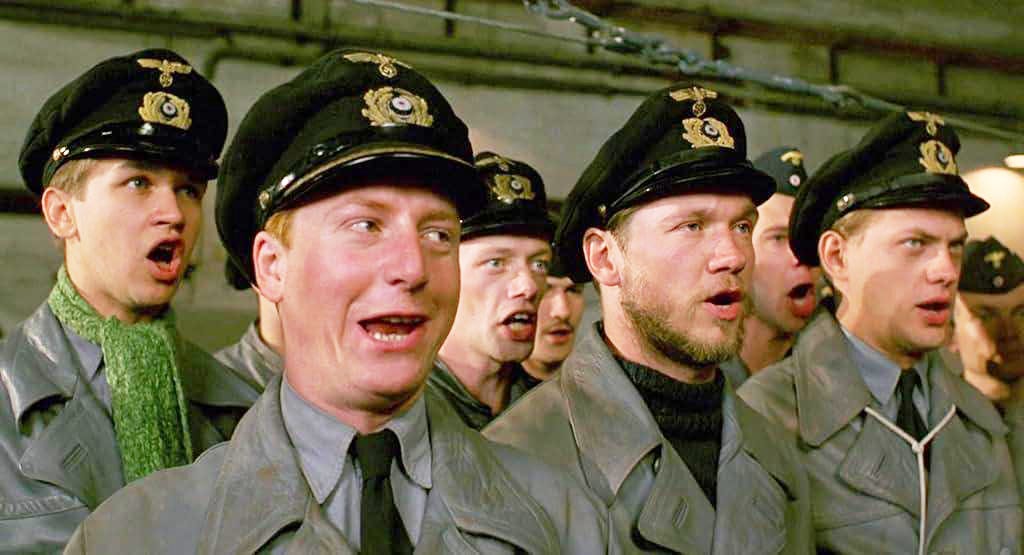
Indeed, German soldiers took as favorably to this song as the British did. The reverse of this also happened with the beautiful German song “Lili Marlene”, which became a favorite among American and British soldiers during World War 2 and remains a classic romantic melody to this day, made an even larger hit by the German actress and singer, Marlene Dietrich
The young men who marched across Ireland and England and the young American soldiers who joined them in Europe sang “It’s a Long Way to Tipperary” without being advised that millions of them and their comrades would end up being killed in a War that, aside from causing the rise of communism, didn’t do a great deal more than make a few fabulously wealthy bankers and investors in New York even more wealthy and wipe out much of the best of western civilization in the bargain.
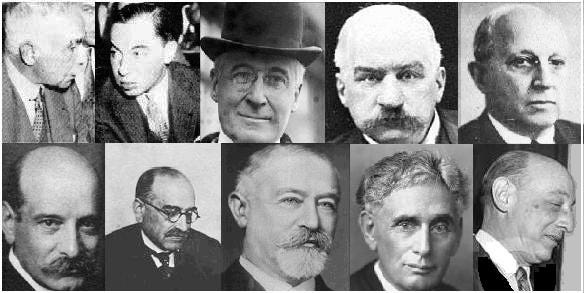
It was a real catchy little song, though.
Keep reading with a 7-day free trial
Subscribe to Eat Your History to keep reading this post and get 7 days of free access to the full post archives.





